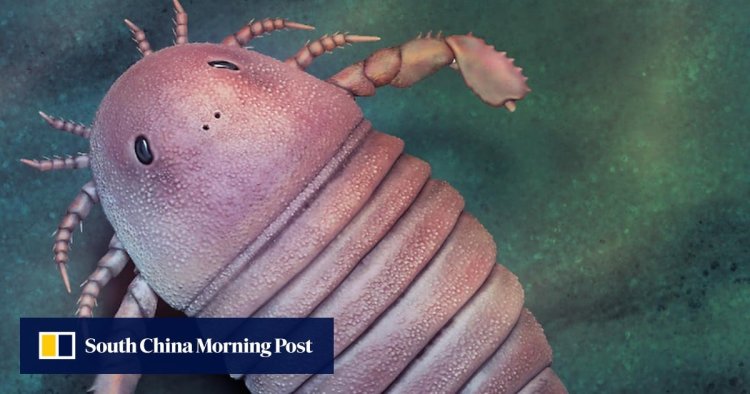Tiny sea scorpion fossil find in China is rare surprise for scientists
2023.05.21 19:00A new species of the long-extinct sea scorpion has been unearthed in southern China, and at just 15cm (5.9 inches) is one of the smallest of its kind ever discovered. The find is also a rarity in China, with most specimens recovered from North America and Europe.The usually daunting predators, also known as eurypterids, were equipped with a segmented armoured body and jointed limbs but no backbone, and had spiny claws to capture prey.Some were larger than a modern human.The discovery by a team of scientists from China and Britain reveals that sea scorpions – which survived the first mass extinction of 445 million years ago and ruled the ancient oceans for more than 20 million years – could also be small.Scientists already knew that the creatures came in dramatically different sizes and shapes, while surviving in equally diverse environments as they moved from dominating the sea into fresh water before taking their first steps on land.But the latest find – detailed by th


A new species of the long-extinct sea scorpion has been unearthed in southern China, and at just 15cm (5.9 inches) is one of the smallest of its kind ever discovered. The find is also a rarity in China, with most specimens recovered from North America and Europe.
The usually daunting predators, also known as eurypterids, were equipped with a segmented armoured body and jointed limbs but no backbone, and had spiny claws to capture prey.
Some were larger than a modern human.
The discovery by a team of scientists from China and Britain reveals that sea scorpions – which survived the first mass extinction of 445 million years ago and ruled the ancient oceans for more than 20 million years – could also be small.
Scientists already knew that the creatures came in dramatically different sizes and shapes, while surviving in equally diverse environments as they moved from dominating the sea into fresh water before taking their first steps on land.
But the latest find – detailed by the international team in the peer-reviewed Journal of Palaeontology this month – shows how diverse these long-extinct top predators really were.
“The species we found had a total body length of 15cm and probably fed on shrimps, worms and other small-sized food,” said co-author Wang Han, a PhD student at the Chinese Academy of Sciences’ Nanjing Institute of Geology and Palaeontology.
The lobster from hell: Giant ‘sea scorpion’ was one of ocean’s first big predators
The creature lived about 450 million years ago and offered “an extremely rare glimpse into what sea scorpions were like in the early days of evolution, especially before the first mass extinction”, she said.
Wang said the find was “particularly precious” to China because most sea scorpion fossils were found elsewhere. It is also rare because, among the 250 sea scorpion species recovered around the world, only a dozen have come from the same geological period, known as the Ordovician.
The team named the animal Archopterus anjiensis after the Anji biota, a unique deposit of exceptionally preserved sponges and other organisms near Zhejiang province’s Anji county where the fossil was found.
The researchers were surprised to unearth the small sea scorpion among a large number of fossilised sea sponges, which usually live on the sea floor. This indicated Archopterus anjiensis may have favoured a deeper-water environment than its post-Ordovician relatives, Wang said.
The animal had a parabolic-shaped head and five pairs of legs, with the front four used for walking as it searched the seabed for food, according to Wang. Two paddle-shaped back legs were used for swimming, she said.
Chinese scientists unearth ancient corgi-sized underwater scorpion
The fossil also revealed several pairs of limbs at the bottom of its body, one of which was used to grasp and tear food. The animal’s tail was poorly preserved, but was probably nothing like the tail of a modern scorpion and unable to sting or hunt prey.
Wang said the creature was very different from another eurypterid found in Xiushan, in the southwestern province of Sichuan, which she studied some years ago with European colleagues.
lived about 10 million years later than Archopterus anjiensis, long after the first mass extinction. It was 1 metre (3 feet) long and a much more aggressive predator, with highly specialised limbs that could work together to catch and hold prey, she said.
With more sea scorpion species being unearthed in China, Wang said she hoped to connect the dots and paint a more comprehensive picture of this diverse family of creatures – from distribution and evolutionary history to what it could tell us about the Earth’s environment in which they lived.
What's Your Reaction?

















